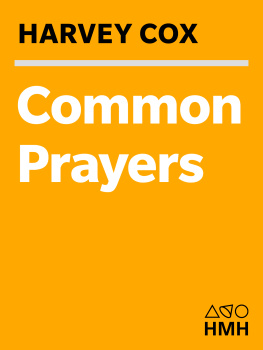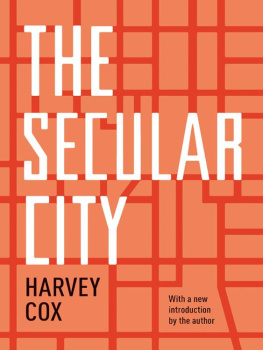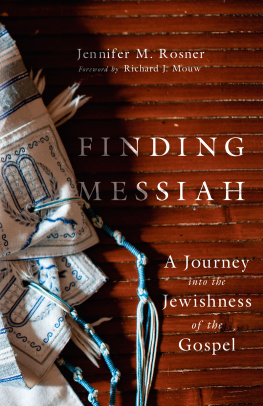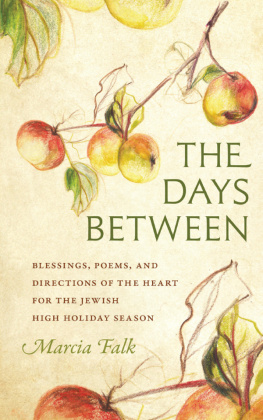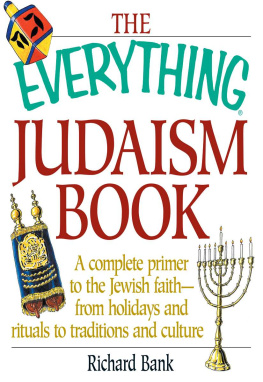Copyright 2001 by Harvey Cox
All rights reserved
>For information about permission to reproduce selections from this book, write to or to Permissions, Houghton Mifflin Harcourt Publishing Company, 3 Park Avenue, 19th Floor, New York, New York 10016.
hmhbooks.com
The Library of Congress has cataloged the print edition as follows:
Cox, Harvey Gallagher.
Common prayers : faith, family, and a Christians journey
through the Jewish year / Harvey Cox.
p. cm.
Includes bibliographical references and index.
ISBN 0-618-06743-4
1. Church yearPrayer-books and devotionsEnglish. 2. Christianity and other religionsJudaism. 3. JudaismRelationsChristianity. 4. Calendar, Jewish. I. Title.
BV 30. C 72 2001
263dc21 2001024992
eISBN 978-0-547-41658-8
v2.0421
This book is lovingly dedicated to
MASHA TUMARKIN
19431993
SUZANNE TUMARKIN
19061994
RABBI MARSHALL MEYER
19301993
Also the sons of the stranger, that join themselves to the Lord,
To serve him and to love the name of the Lord, to be his servants,
Every one who keepeth the sabbath from polluting it,
And taketh hold of my covenant;
Even them will I bring to my holy mountain, and make them joyful.
Isaiah 56:6, 7
Acknowledgments
The vigorous life of several Jewish congregations in which I have participated as a welcome guest have provided lively examples of living Judaism that both inspired me to write this book and sustained me while I was working on it. They include, among others, Congregation Eitz Chaim in Cambridge, Massachusetts, Temple Beth Zion in Brookline, Massachusetts, and Congregation Bnai Jeshurun in New York City. Generous rabbis and scholars of Judaica came to my aid when I found myself, as I often did, over my head. I think especially of Moshe Waldoks of Beth Zion, Irving (Yitz) Greenberg, who is president of the National Jewish Center for Learning and Leadership, Cherie Koller-Fox of Eitz Chaim, and Professor Hillel Levine of Boston University. David Hartman, by inviting me to participate in conferences at the Shalom Hartman Center in Jerusalem, opened my eyes to a wider range of Jewish life than I had ever known before. At that thriving center of scholarship and spirituality Dr. Moshe Idell introduced me to the fascinating world of the Kabbalah. One rabbi, however, merits special mention. The late Marshall Meyer, who before his death was the spiritual leader of Bnai Jeshurun and for one memorable semester led a seminar with me at Harvard, taught me more about Judaism simply by being who he was than he could ever have known.
My editor at Houghton Mifflin, Eric Chinski, encouraged me from the first day we talked about the possibility of this book, and his friendly but exacting comments on the manuscript as it progressed have made it, I am sure, a better book than it would have been. Donald Cutler of Bookmark, my literary agent and friend for decades, made sage and good-humored suggestions at different stages. Luise Erdmann performed the demanding job of line editing with consummate skill.
My old friend and colleague Bishop Krister Stendahl, a New Testament scholar who has spent a lifetime deepening and improving relationships between Jews and Christians, carefully read the entire manuscript and offered indispensable comments and suggestions, most not all of which I have followed. My research assistant at Harvard, Andrea L. Anderson, skillfully searched out resources I needed, read chapters along the way, and made thoughtful suggestions. My faculty assistant for many years, Margaret Studier, made comments on the book as I wrote it, patiently printed out successive versions of the different chapters, and helped me in countless other ways.
My son Nicholas helped me a lot too. When we worked together preparing for his bar mitzvah, it was a wonderful education for both of us, affording us abundant opportunities to discuss the issues this book addresses. That discussion is still going on. Finally, my wife, Professor Nina Tumarkin, reviewed nearly every page with me more than once, took time from her own scholarly research in Russian history to read the entire manuscript, and continued to encourage me when I wondered if I had taken on something I could never finish. Besides, without the good fortune of my marrying her, the idea of writing this book would never have occurred to me. In addition, the many members of her extended family, both the living and the ones who are no longer with us, have always made me feel at home with them. In part, of course, this is a book about them, and I hope they enjoy it.
H ARVEY C OX
April 15, 2001
Last Day of Pesach, Easter Sunday
Cambridge, Massachusetts
Introduction
For my house shall be called
A house of prayer for all peoples.
Isaiah 56:7
IN KEEPING WITH THE VISION of their prophets, the builders of the ancient Temple in Jerusalem designed it to be a house of prayer for all peoples. There was an inner area where only Jews were admitted. Here stood the Holy of Holies, which only the high priest was permitted to enter, and that only once a year, on the Day of Atonement. There was also a section explicitly named the Court of the Gentiles. Throughout the ancient world, many gentiles worshiped with Jews without ever converting to Judaism. The Jews welcomed them as God-fearers, and their presence in the Temple reflected the age-old Jewish hope that one day all nations and peoples, including strangers and sojourners, would join in praise of the One who created them all.
The word gentile is not synonymous with the word Christian. Our English gentile is derived from the Latin term for nation, and in Jewish usage it means anyone who is not a Jew. (I sometimes enjoy informing my Jewish friends that among Mormons, gentile refers to anyone who is not a Mormon, including Jews.) Of course, the distinction between gentile and Christian meant nothing during the years of Herods temple, since the newborn Christian movement was still a sect, among many others, within Judaism. But this changed after 70 C.E. when, during the reign of the emperor Titus, the Roman legions razed the Temple and expelled the Jews, including those Jews who were followers of Jesus, from Jerusalem. It was only after that catastrophe that the division between what we now call Judaism and Christianity began to set in. Decades passed before it became a complete rupture.
Today, only the famous Western Wall of the Temple remains. But I sometimes think of myself as one of those strangers or sojourners mentioned by the Jewish prophets. For a decade and a half, in addition to following my own spiritual tradition as a Protestant Christian, I have also lived and prayed with Jews. I have a special reason for doing so. Fifteen years ago I married a Jewish woman. Nina had been raised in a family of largely nonobservant Jews in New York City. As a teenager, partially (she now concedes) in a display of adolescent rebellion, she began attending activities at the Stephen Wise Free Synagogue. But when she left home for college and graduate school, she also became nonobservant. Later in life, however, after some painful personal experiences, she began to reclaim her Jewish heritage. She was still engaged in this quest when we met. Today her Jewish faith is deeply, and increasingly, important to her.
I was raised in a small town in Pennsylvania. My own parents were quite casual about churchgoing, but they dutifully dispatched my two brothers, my sister, and myself to the Baptist Sunday school next door. My grandparents attended it also but were not at all what I would call devout. Our family never said grace before meals, and as children we were never taught to say prayers before bedtime as some of our friends were. Nonetheless, as I grew older I became more involved in the church, first through the youth group and choir. I joined the church at thirteen; by then I was already fascinated with reading books about religion and theology. When I left for college I had decided I wanted to explore these fields further, perhaps even to become a minister. My parents did not disapprove but were somewhat less than enraptured. They advised, quite rightly, that a career in accounting would yield more financial security. As the decades passed, however, they reconciled themselves and eventually even seemed pleased with the direction my life had taken.

